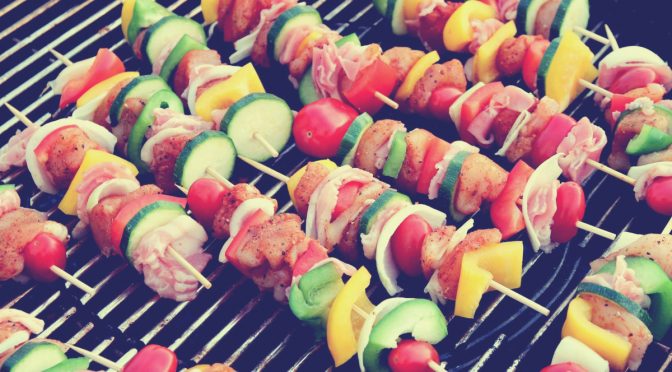
Product Review: DCC Double Chocolate Brownies
Every now and then, when you go out to dinner at a place that offers gooey brownies topped with ice cream, you may be tempted to get one. Especially if you’re like me and you miss the chocolate deliciousness of a brownie. I actually have a pretty good brownie recipe, but the ease of having a mix that is so simple, you can put it together in five minutes is pretty alluring.
 I recently bought a package of Dixie Carb Counters (DCC) Double Fudge Brownie mix to give it a try. First, it is a snap to get this ready to go in the oven. The easy to follow recipe walks you right through it. Before you begin, grease an 8″x8″ pan.
I recently bought a package of Dixie Carb Counters (DCC) Double Fudge Brownie mix to give it a try. First, it is a snap to get this ready to go in the oven. The easy to follow recipe walks you right through it. Before you begin, grease an 8″x8″ pan.
First problem, I can’t find my 8×8 pan, so I settle for my 6×6 pan. Okay, so my bars will be thicker than they would be in an 8×8, which means cook them a little longer. Also, I cut a piece of parchment paper to put on the bottom so they won’t stick. That takes a minute to do, so not an issue. Then spray the parchment with baking spray.
Next, melt one stick of unsalted butter and the contents of package 1, which is chocolate, together in a medium-sized bowl in the microwave. Works great. After one minute, I have melted chocolate and butter that I mix together.
Next add in 2 eggs, the flour and cocoa mixture in the second packet and mix well. Pour into your baking pan and cook for 15 to 18 minutes until they are done and spring back when you touch them. Cut into 16 pieces and you’re done.
Easy to make. But you don’t end up with the little beauty at the top of my page. Nope, that is my variation on this mix. While the mix will yield a 2×2″ brownie that is 52 calories and 2 net carbs, it isn’t iced and nutty like mine. To make my version, read on.
Caramel Pecan Brownie

1 package of Dixie Diner Double Chocolate Brownie Mix
2 Eggs
1 Stick Unsalted Butter
1/2 teaspoon Vanilla Extract
1/3 cup Pecans, chopped
9 Russell Stover Sugar-free Chocolate Carmels, cut in half
Preheat oven to 325 degrees. Prepare an 8×8-inch baking pan with baking spray or cut a piece of parchment paper to fit the bottom and spray with baking spray.
In a medium microwavable bowl, add the butter and packet 1 from the mix (chocolate bar), then microwave on high for 1 minute. Stir to mix together and make sure they are melted. (If not, put back in the micro for another 30 seconds.)
Add the baking mix in packet 2, vanilla extract, and the eggs. Mix together using a spoon or whisk until all the flour is incorporated. Add the pecans and stir to distribute.
Pour the batter into the pan and tap it down to make sure it is even. Bake for 15 to 18 minutes until the brownies look done but still soft when you touch them. Turn off the oven, then put the caramels on top of the brownies in rows of 3 across and 3 down. Leave the brownies in the oven another 5 minutes, then remove and spread the melted chocolate caramel over the top like an icing.
Remove and let cool so the caramel sets before cutting into 16 – 2 inch brownies.
Nutrition Information for 1 brownie (16 yield)
Calories: 84.3 Fat: 5.8 g Net Carbs: 2.5 g Protein: 1.5 g
If you make them in a smaller pan, like a 6×6″ one, then cook them about 20 minutes before checking, then follow the rest of the instruction, but cut them into 8 slices rather than 16.
Nutrition Information for 1 brownie (8 yield)
Calories: 168.7 Fat: 11.5 g Net Carbs: 5.0 g Protein: 3 g
Based on my experience with the Brownie mix, I’d give it five cooking spoons of deliciousness.
Tip: If you refrigerate your brownies, take them out about an hour before you want to serve them to allow them to come to room temperature and for the caramel to soften before cutting.








